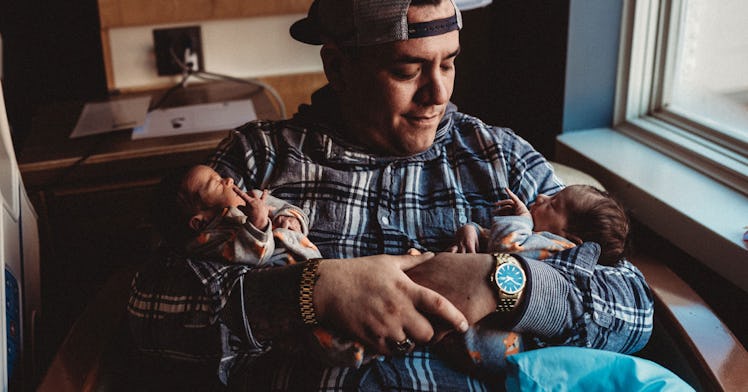Twinning? More Twins Being Born Than Ever, Science Says
What's behind the rise in fraternal twins?

For parents, finding out they’re expecting twins is often a huge shock. And there’s no surprise why: twins are a rare occurrence, and an expensive one to boot. But, according to new research, more parents are experiencing this surprise moment than ever before. Worldwide, twin births are happening at a higher rate than they ever have in recorded history.
Statistics show that since the 1980s, twin birth rates have increased worldwide by more than 30%. Back then, twin births were happening 9 times per 1000 deliveries, a rate that held steady until 1985. Between 2010-2015, the rate jumped to 12 twin births per 1000 deliveries.
That one-third raise may not seem like a lot looking at those numbers, but the reality is, at an aggregate rate, twins are coming into this world a lot. According to a global overview, which was shared in the Human Reproduction journal, the rate of twin births has risen everywhere in the past 30 years. 1.1 million twins were delivered in the 1980s. In the 2010s, 1.6 million twins were, a rate increase of 42% of twin births. which jumped by 42% to 1.6 million by the early 2010s. And it can’t be explained away by the birth rate rising as a whole.
Actually, twins have overtaken a larger share of births in general. According to the BBC, if we compare those to the number of births worldwide – including singletons – which only grew by 8% during the same period, there’s definitely more twins born that we can’t blame on just more babies being born.
The study points out that the number of twins is solely driven by births of “fraternal twins,” – which derive from two fertilized eggs. The rate and number of “monozygotic” or identical twins — remained the same.
So, what’s the deal? Why are we seeing such a major increase in twin births?
IVF. The increase in twins is directly related to the increasing use of medically assisted reproduction. Basically, with people utilizing fertility assistance procedures like IVF, artificial insemination, ICSI, and ovarian stimulation, more twins are happening.
According to Live Science, IVF (in vitro fertilization) procedures increase the chance of having twins or multiple pregnancies. Couples often opt to transfer more than one embryo during these procedures, increasing the chances of getting pregnant. Given IVF is so expensive, it’s a route many couples take – even though it comes with a larger chance of getting pregnant with twins.
Plus, the older people are whenever they get pregnant, regardless of whether or not they use IVF, they are more likely to become pregnant with twins. But, as a result of the skyrocketing rates of twin births, some fertility doctors are starting to limit just how many embryos they’re willing to transfer at a time, per the author’s study. Twins can be dangerous on a pregnant person’s body.
“The relative and absolute numbers of twins in the world are higher than they have ever been since the mid-twentieth century, and this is likely to be an all-time high,” Professor Christiaan Monden, of the University of Oxford (UK), the first author of the study, said. “This is important as twin deliveries are associated with higher death rates among babies and children and more complications for mothers and children during pregnancy, and during and after delivery.”
This article was originally published on